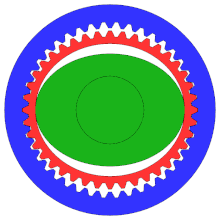/
Strain Wave/Harmonic Drive
Strain Wave/Harmonic Drive
Suppliers
Another option is making our own, but it's likely to to be a lot less accurate that way, which defeats the purpose., multiple selections available,
Related content
Harmonic Gearbox Slides
Harmonic Gearbox Slides
More like this
Electromate Arm Subsystem Requirements
Electromate Arm Subsystem Requirements
More like this
Gears
More like this
Cycloidal Drive - Rev 1 Prototype Journal
Cycloidal Drive - Rev 1 Prototype Journal
More like this
2021-04-30 Meeting Minutes - Arm - Final Concept
2021-04-30 Meeting Minutes - Arm - Final Concept
More like this
Arm Prototype 1 Testing Results
Arm Prototype 1 Testing Results
More like this



